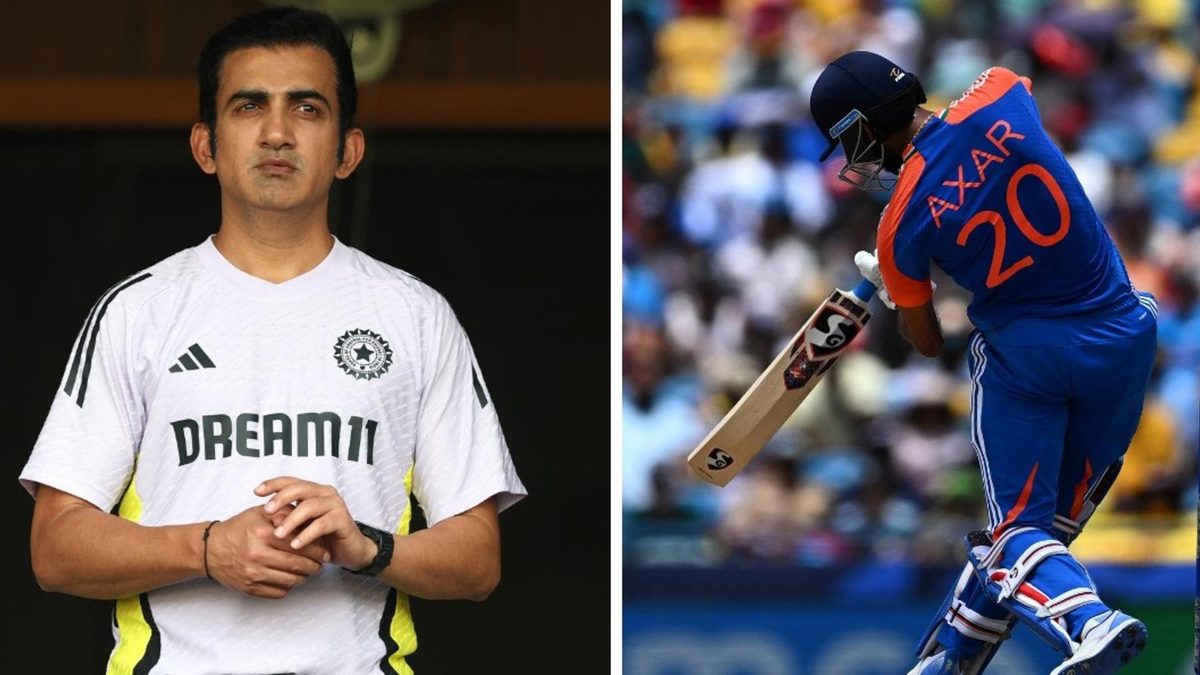
Gautam Gambhir’s appointment as India’s head coach has brought a slew of changes, the most notable of which has been his unwavering commitment to a left-right hand batting combination. While the logic behind the move is sound on paper, disrupting a bowler’s rhythm by constantly changing angles and forcing captains to rethink their field placements, is it necessary in ODIs?
When Axar Patel walked out at No.5 in the first ODI against England at Nagpur, above established batters KL Rahul and Hardik Pandya, it had Gautam Gambhir’s imprint all over it. While Axar has batted at or above that position before and played a match-winning role with the bat in the 2024 T20 World Cup final, his second such promotion in three ODIs suggests it is a game plan the India management has thought long over.
Gambhir’s formula in T20Is has been to develop a line-up of all-rounders instead of specialists, while the Test side has seen him take the thinking further, with India controversially playing just three specialist seamers to extend batting depth in Australia. He has only coached the team in four ODIs, not enough to suggest the tactical approach he will adopt going forward.
One thing is clear, though: His preference for the left-right combination has been a hallmark across formats, having first tasted immense success with it during the IPL last year where he mentored Kolkata Knight Riders to the title. But while this approach has its merits in T20s, where exploiting matchups and short-term tactical gains can impact results, there is little to suggest it has been a successful experiment in the longer formats.
The recent batting order shuffles
Unlike T20s, where teams can afford to shuffle their order frequently, the 50-over format requires constructing innings with well-defined roles. A case in point is India’s line-up during the 50-over World Cup. Rohit Sharma was the powerplay aggressor, Virat Kohli was the anchor, Shreyas Iyer, at No.4, took on the spinners, while Hardik Pandya at No.6 countered the pacers. KL Rahul, as the wicketkeeper, was a flexible batter who could either accelerate or stabilise, depending on the situation. This gave the top six a balance that allowed them to adapt to match conditions effectively.
However, since Gambhir has taken over, there have been visible changes. While it's a small sample size, India's four ODIs since then can still support our argument. The team has not had a fixed top-six in any of these games: In the first ODI against Sri Lanka last year, Washington Sundar was pushed to No.4, with Axar Patel and Shivam Dube at seven and eight. Sundar had played only 19 ODIs and averaged 24.54 with the bat.
In the next ODI, Dube was promoted to four, with Axar at five, forcing Iyer and Rahul down to six and seven. Sundar was pushed further to No.8, creating a top-order stacked with left-handers. The experiment continued in the third ODI: Rishabh Pant replaced Rahul as wicketkeeper, and while no official reason was given, it seemed to be to further the number of left-handers in the side. With the inclusion of Riyan Parag and Kuldeep Yadav, India had six left-handers in the lineup.
India’s assistant coach Abhishek Nayar justified the decision, stating: "My belief is that in any sport, position only matters if you're playing in different areas of a game. We lost wickets in the middle phase, and that's where the middle order batters batted. It's not as if middle order batters batted towards the end. If you look at numbers like four, five, or six, maybe sometimes it can play games in your head. It was more about keeping a left-and-right combination, keeping in mind that there were off-spinners and a leg-spinner in the Sri Lanka team."
No fixed ODI line-up going forward?
The same trend continued against England, where India pushed Axar to No.5 and handed Yashasvi Jaiswal an ODI debut. Before the series, it seemed unlikely that Jaiswal would be part of India’s XI for the Champions Trophy despite his phenomenal List A numbers, but his sudden inclusion, paired with Shreyas Iyer’s surprising statement that he was unlikely to play if Virat Kohli was fit, sparked speculation about India prioritising left-right combinations over individual performances. No other player had averaged higher at a better strike rate than Iyer in the ODI World Cup, making his uncertain place in the squad a confusing decision.
Going forward, it seems likely that Gambhir will continue experimenting and India might not have a fixed batting lineup in ODIs. The reasoning could be that the team is viewing ODIs as extended T20s, focusing on matchups, short boundaries, and left-right combinations rather than role definition. But the danger of applying T20 tactics across all formats is that it ignores the fundamental differences between them. Test cricket and T20s, for example, are almost different sports, requiring distinct strategies. While innovation is crucial, whether this approach ultimately succeeds or not remains to be seen.
Follow Wisden for all cricket updates, including live scores, match stats, quizzes and more. Stay up to date with the latest cricket news, player updates, team standings, match highlights, video analysis and live match odds.








